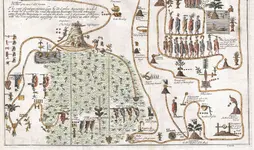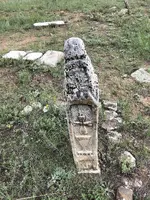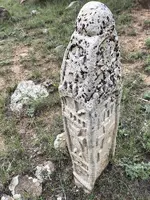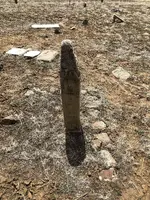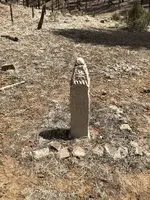Hello All,
This came from another site:
https://realghoststories.tumblr.com/post/77874853569/my-ghost-story-from-philmont-anon-submission
My Ghost Story From Philmont (anon submission)
Located on the property of Philmont Scout Ranch in Northeast New Mexico is a mesa known as Urraca Mesa. I have visited this ranch many times from age 13 to now, four times as a camper and twice as a staff member. I have been on this mesa all six times I was at Philmont, and each year, except the last nothing strange or odd ever occurred. Before I tell of my personal experience on this mesa, I want to give a little background.
There are many myths and legends regarding this mesa. Some of them were invented by the staff to scare the campers, such as “The Lost Boy Scout”, while others maybe as old as time itself. Legends regarding this mesa date back to the times of the Anasazi and Jicarilla Apache Indians who once lived in the area.
The mesa is a strange place to visit. If you look at the piece of the topographical map you will notice that the left side (western edge) of the mesa has a skull like shape with a slight indentation where the “eye” would be. Additionally, compasses are little if any good while on the mesa, as they tend to move erratically about. Scientists have explained this little phenomenon away to the high levels of iron in the basalt rock that forms the cap of the mesa.
This mesa is known to have the highest number of lightening strikes per year in all of New Mexico. Is this due to the iron, or something else? Photographers are challenged to get good quality photographs while near the eye of the mesa, having streaks of white and blue in the prints and negatives. Are these spirits or iron distorting the film?
The word “urraca” means magpie. The magpie is a mid-sized black bird with white on its wings and chest. It is a member of the crow family. The Anasazi and Apache believed that the Magpie was a portent of evil and a bad omen. They believed that if the magpie called your name, you were doomed to an ill fate.
The Anasazi believe that the “eye” in the skull area of the mesa was a portal to the Fifth Dimension, or hell as you and I would refer to it. Medicine men from the neighboring Navajo tribe have studied the mesa, the petro glyphs and lore of the area, and have come to the conclusion that a huge battle between the Anasazi and the forces of the underworld was waged on the top of the mesa. The Anasazi were victorious, but at a cost.
In the end, all but their oldest and most powerful shaman returned to the Fifth Dimension. In order to keep the evil of the Fifth Dimension within sealed off, the shaman sealed it behind them with the use of six totems bearing cat carvings. Should all six of these totems fall, the portal would open and horrors from the other realm would be released causing the equivalent to an apocalypse. The cat totems were said to scare away the magpies who were believed could open the portal. Reports claim that four or five have already fallen, but these are unconfirmed.
Last summer, while I was a staff member at Philmont Scout Ranch, I had an opportunity to participate in an unofficial event called the Ranger Marathon. The idea of the event is to start at the northern most staffed camp on the ranch and hike to the southern most staffed camp with a 35 pound pack plus food and water. It is done on an honor system, and is not officially sanctioned by the BSA. This hike is usually done solo, or with one other person. While only the trail guides, or “rangers” as they are called, are allowed to participate in this “race”, I was allowed since in at the time I was an assistant—sorta— and I was one of them.
The route I chose for this grueling hike through the rugged Sangre de Christo Mountains takes you directly over the top of Urraca Mesa. Additionally, since it was the middle of the summer, I decided to do the trip at night to avoid the heat of day. It was a clear moonlit night.
At about three in the morning I crested the northern rim of Urraca Mesa, by way of Urraca Camp, and was prepared for a short jaunt across and down in to Toothache Springs camp of the southern slope. I paused to have a drink of water, when I heard some noise off to the west of me. Something or someone was shuffling through the bushes.
As I reached for my flashlight, I was thinking it was a deer, bear or mountain lion, yes, they do live there. I hit the button to turn it on, but nothing happened. I thought this was very odd, since I put new batteries in it at the start of the marathon, and hadn’t used it since the start. I grabbed my spare light, and it too did not work, even with the brand new batteries I had put in it.
“Okay,” I thought, “stand still and be quiet. It will move on in a few minutes.”
The sound came closer and then stopped in some bushes about 20 feet away from me. After a few minutes, I started to move on down the trail towards the south, and after a few hundred feet I heard the sound again. As I stopped and looked, the sound stopped too.
I started walking again, and the same thing happened. I stopped, and the sound stopped. Looking ahead, I saw a break in the bushes parallel to the trail I was on; this break was by the trail that leads up into the “skull” of the mesa. I walked further down the trail and as I came alongside the opening in the bushes, I watched the end of the bushes.
As I passed the end of the bushes, I saw a figure about half my height, hairless, and dark skinned watching me from the edge. “What the **** is that?!?” I screamed to myself as I start running down the trail. “Is that one of the creatures from the portal?” As I ran I suddenly realized that I was approaching the “eye” of the skull. Somehow I had veered off the trail I was on, and went west instead of south.
I turned and ran for the southern rim as fast as I could, scared out of my wits. As I crossed the southern rim, I regained the trail towards Toothache Springs Camp. About halfway down, I paused to catch my breath, and looked back up the trail, only to see a figure bathed in bluish light standing on the cliff tops above me.
The Utes, Apache and Navajo Indians who lived in the area after the demise of the Anasazi, along with visitors today, claim the shaman, bathed in a bluish light, is still guarding the portal. Personally, I am in total agreement with them.
Believe what you will/wish
Regards
LUE-Hawn



